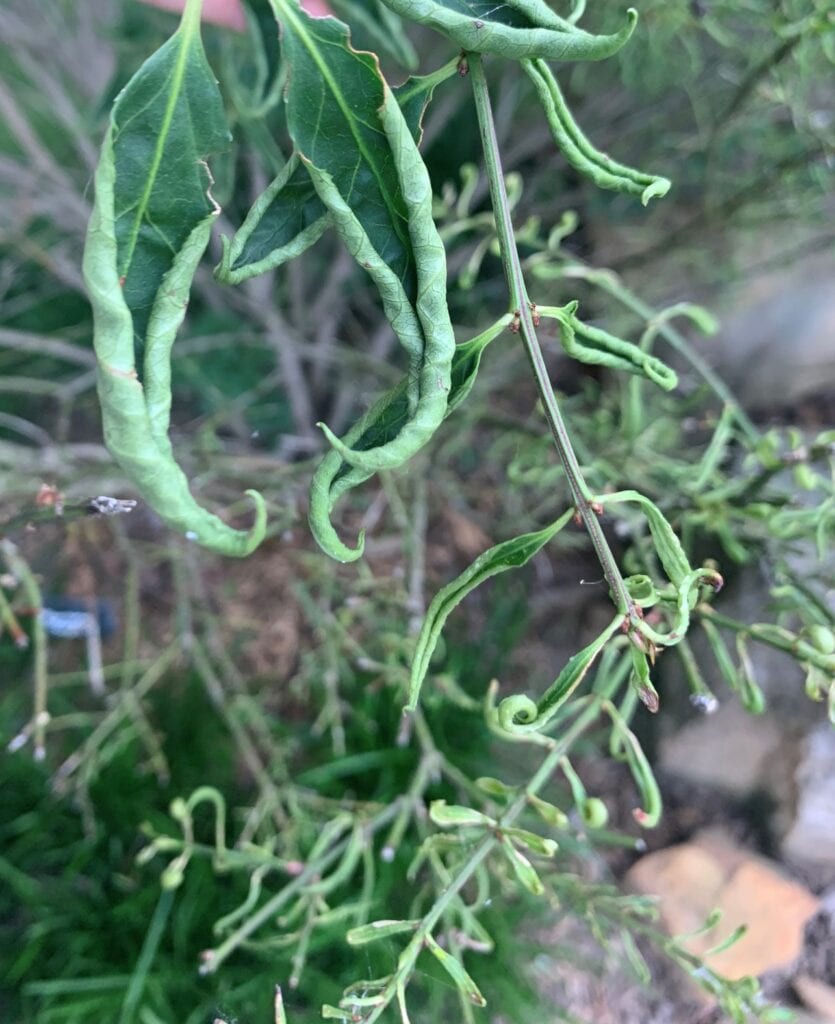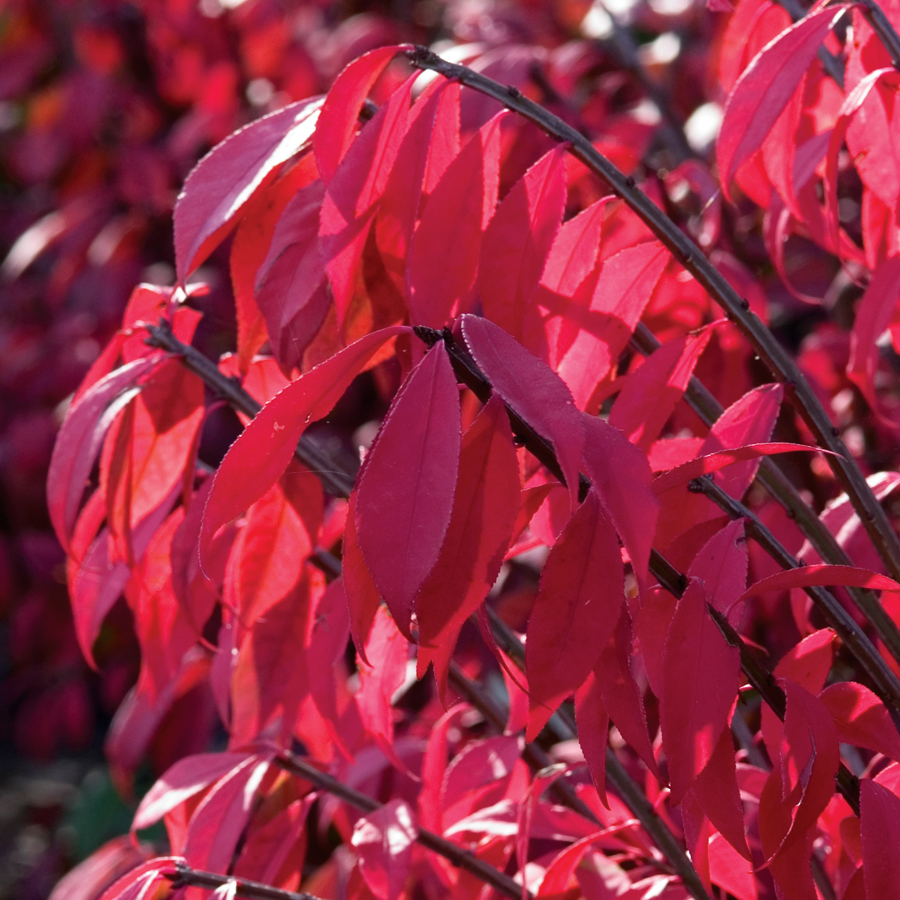Plant problems show up in many ways. Dry, brittle leaves can indicate a lack of water. Mold or fungus problems can be seen as white powdery spots. Seemingly overnight, a healthy plant can wither and die. Walking in my yard recently, I discovered that a beautiful 10-foot tall Burning Bush Shrub had shriveled leaves on about 75% of it! This amazing plant has showy red foliage in the fall and is a favorite. My first thought was to grab a pesticide and start spraying! However, my initial reaction was to overlook several important steps in the diagnosis and treatment of the problem.
A pesticide is any material (organic, natural, or synthetic) specifically designed to control, kill, prevent, or suppress pests. Falling into this group are insecticides, herbicides, and fungicides. Aggressive marketing strategies encourage using an “easy fix” by applying pesticides. But before using one, gardeners can benefit from a process to determine that it is indeed needed.
Begin by gaining some evidence to determine what is damaging the plant. There are literally hundreds of online resources available to gardeners. Most universities publish horticulture information. By adding “.edu” to your internet search, you will easily be directed to these resources. For example, searching for “pesticides.edu” results in information from many horticulture programs across the nation. Another great resource is local nursery centers. Plant experts have probably seen the problem found in your garden and can provide information on treatment. Some of the larger Master Gardener groups also staff a call line that connects you with a seasoned gardener.
Once the problem is identified, consider different ways to manage it. Prevention is very effective! Taking time to inspect the under leaves of a squash plant regularly can reveal unhatched Squash Bug eggs. Removing these eggs helps stop an infestation in its tracks! Finding, and destroying, pests prior to their hatching can be a great preventative step. Also, consider natural enemies for pests. Ladybugs have a voracious appetite for aphids, whiteflies, and spider mites. Ladybugs can be purchased online and shipped to your house for release. The praying mantis is a carnivorous insect that can be beneficial in pest control. If you do want to employ Integrated Pest Management techniques such as these, do keep in mind that nature does strive for a balanced food chain in the environment. However advantageous it may seem, an overabundance of any one insect can create additional problems.
Another solution is to provide extra plants for the pests. As crazy as this sounds, it is a workable theory. To encourage butterflies in my garden, I plant specific host plants for the butterfly eggs. If there were only a single parsley plant in my garden, it could likely be completely defoliated overnight by the beautiful Swallowtail Caterpillars. If there are multiple parsley plants available, then the caterpillars and I can share!
Utilizing good garden practices can help control pests. An unhealthy plant is more likely to have a pest problem. Correctly pruning, fertilizing, and watering contribute to plant health. Providing mulch to control weeds and keep ground moisture available is recommended. Choosing to plant varieties of plants that are more pest-resistant species provides additional protection.
Timing the use of a pesticide is vital. For example, if complete defoliation is noticed on a large plant, the pests have probably moved on to another food source. Spraying a pesticide is ineffective at that point. Most pesticides only control certain stages of the pest. For example, many only kill the larvae (not the eggs) so must be applied when larvae are active.
If you do choose to use a pesticide, take the time to research and ensure it is recommended for the particular plant and pests you are targeting. Carefully read the label and follow the directions closely. Adding “a little more” pesticide than recommended does not increase the efficacy of the product. In fact, it may damage the plant. If possible, apply a pesticide early in the morning or late in the evening. This allows the chemical to dry before bees and other pollinators begin their foraging.
Hopefully, a combination of these practices will create a balanced environment and encourage a great gardening experience!












